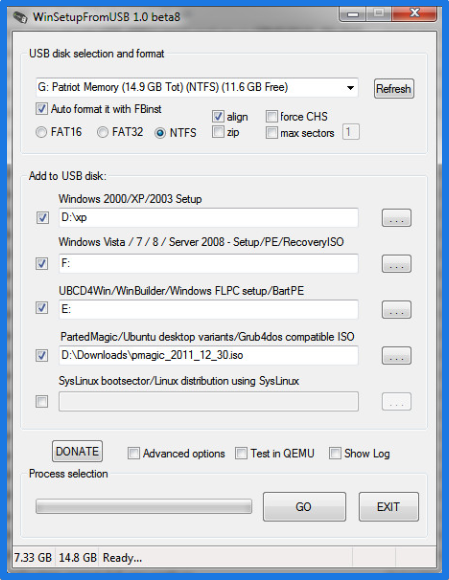

#Bootable usb image tool iso
“ G:\” and size).īoot selection needs to point to point to the Kali Linux ISO file, which can be done by clicking the SELECT buttonĭepending on your configuration, you can set the Partition scheme, as well as Target system. With Device, check the dropdown list of options for the USB drive (e.g. “ G:\”) it uses once it mounts, and launch Rufus.
#Bootable usb image tool windows
Plug your USB drive into an available USB port on your Windows PC, note which drive designator (e.g. This is to allow for the most hardware compatibility.Ĭreating a Bootable Kali USB Drive on Windows (Rufus)

Once Etcher alerts you that the image has been flashed, you can safely remove the USB drive and proceed to boot into Kali with it.Īt the time of writing, Etcher will use MBR. Note: You may get a UAC prompt asking for administrator privileges that you will need to accept.ĥ. “ G:\”) it uses once it mounts, and launch Etcher.Ĭlick Flash from file, and locate the Kali Linux ISO file to be imaged with.Ĭlick Select target and choose the USB drive you want to make bootable. Just ignore the warnings.Ĭreating a Bootable Kali USB Drive on Windows (Etcher) Those warnings are expected: Kali Linux is packed with pentesting tools that are likely to be flagged as malware. This message usually comes from Windows Defender or USB Defender, or a third-party antivirus. The procedure is identical.)ĭuring this procedure, you might see some warnings telling you that Kali Linux contains malware, trojan, virus or whatever. If one does not work for you, consider the other.Ī USB drive, 8GB or larger (Systems with a direct SD card slot can use an SD card with similar capacity. We recommend Etcher (installer or portable) as it is simpler to use, however Rufus is another popular option with its advance options. If you’re running under Windows, there is not one tool that is considered the overall best for imaging. What You’ll NeedĪ verified copy of the appropriate ISO image of the latest Kali build image for the system you’ll be running it on. The specifics of this procedure will vary depending on whether you’re doing it on a Linux, macOS/OS X, or Windows system. In order to do this, we first need to create a bootable USB drive which has been set up from an ISO image of Kali Linux.


It’s customizable - you can roll your own custom Kali Linux ISO image and put it onto a USB drive using the same procedures.
#Bootable usb image tool portable


 0 kommentar(er)
0 kommentar(er)
